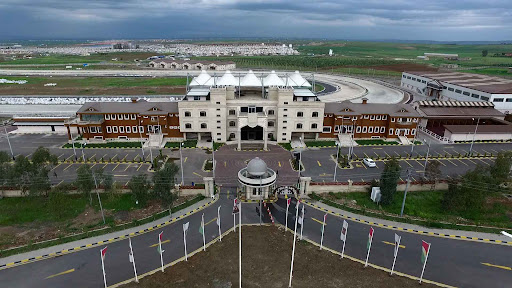Cutting-edge electrical and smart automation solutions for residential, commercial, and industrial clients.
حلول كهربائية وأتمتة ذكية متطورة للعملاء السكنيين والتجاريين والصناعيين.
Transform your home with our KNX automation solutions, integrating lighting, climate, security, and entertainment systems for seamless control.
قم بتحويل منزلك مع حلول أتمتة KNX لدينا، ودمج أنظمة الإضاءة والمناخ والأمان والترفيه للتحكم السلس.
Learn More اعرف المزيدProtect your property with our advanced fire detection and alarm systems, designed for early warning and reliable performance.
قم بحماية ممتلكاتك مع أنظمة الكشف عن الحرائق والإنذار المتقدمة لدينا، المصممة للإنذار المبكر والأداء الموثوق.
Learn More اعرف المزيدMonitor and secure your premises with our high-definition CCTV solutions, offering remote viewing and intelligent analytics.
راقب وأمّن مبانيك مع حلول كاميرات المراقبة عالية الدقة لدينا، التي توفر المشاهدة عن بعد والتحليلات الذكية.
Learn More اعرف المزيدExpert electrical design services for residential, commercial, and industrial projects.
خدمات التصميم الكهربائي الخبيرة للمشاريع السكنية والتجارية والصناعية.
Customized KNX automation solutions tailored to your specific requirements.
حلول أتمتة KNX مخصصة مصممة خصيصًا لمتطلباتك المحددة.
Expert programming for all home and building automation systems.
برمجة خبيرة لجميع أنظمة أتمتة المنازل والمباني.
Supply of high-quality electrical and automation components from trusted manufacturers.
توريد مكونات كهربائية وأتمتة عالية الجودة من مصنعين موثوقين.
Expert advice on electrical and automation systems from our certified professionals.
نصائح خبراء حول أنظمة الكهرباء والأتمتة من المحترفين المعتمدين لدينا.
Thorough testing and commissioning services to ensure optimal system performance.
خدمات اختبار وتشغيل شاملة لضمان الأداء الأمثل للنظام.







Contact us today to discuss your electrical and smart automation needs.
اتصل بنا اليوم لمناقشة احتياجاتك من الكهرباء والأتمتة الذكية.
Get in Touch تواصل معنا